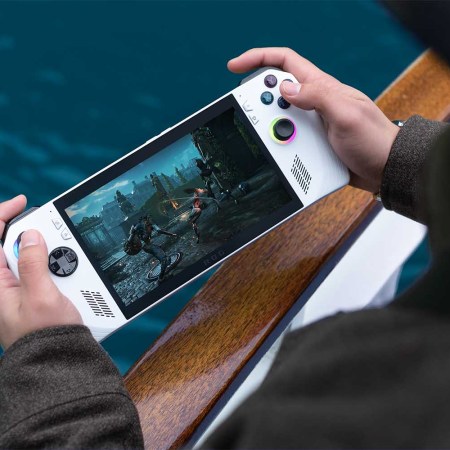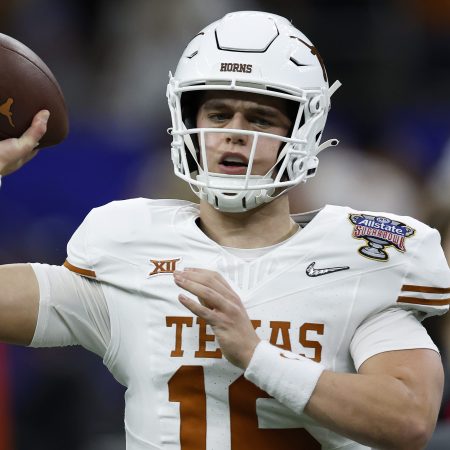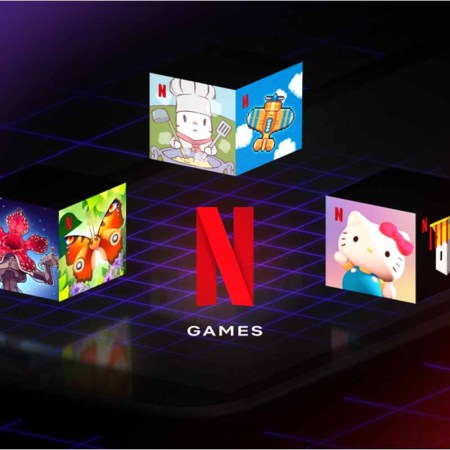Once upon time, a little-known toymaker called Nintendo had a dream to break into the arcade market in America.
They were hell-bent on making Radar Scope, a successful game in Japan, their first conquest in the USA.
You remember Radar Scope, right?
Luckily for those of us who grew up in the ‘80s, the title promptly flopped, selling just a third of its anticipated 3,000-machine run… and leaving 2,000 machines sitting around that needed converting into something else.
That something else would be Donkey Kong, an interactive tour-de-force that was the first title fully-designed by future Super Mario Bros. creator Shigeru Miyamoto and Gunpei Yokoi, later hailed as the father of the Game Boy.
The game didn’t just go on to help the company barnstorm the nation — it also became a beloved favorite of millions of players worldwide and forever reshaped the way we look at the field of interactive entertainment.
In honor of the franchise’s 35th anniversary, here’s a closer look at the series’ legacy — and several fun pieces of trivia even longtime fans may be surprised to learn. (Also: since you probably feel like playing it, here’s an emulated version for your browser.)
It’s called Donkey Kong because of linguistics…
Apart from the fact Japanese creator Shigeru Miyamoto (also of Legend of Zelda, Star Fox and Pikmin) fame doesn’t speak English as a first language, why Donkey Kong? According to industry lore, he wanted to convey the idea of a stubborn (“Donkey”) gorilla (“Kong”). In the face of all things common sense, the name caught on. But as offbeat monikers go, let’s be fair: It wasn’t nearly as silly as “Puck Man” (the original name for Pac-Man, which was changed to keep clever vandals from grabbing a Sharpie and making a certain edit to the first letter).
…. and the makers of King Kong couldn’t complain
The King Kong films were popular in Japan and synonymous with the idea of a rampaging gorilla, so the title seemed a natural choice. Alleged movie rights holders Universal Studios disagreed. One problem: Universal itself had recently won a legal battle to remake the original film by proving that King Kong was in the public domain — thereby reminding the courts (and the studio’s own legal team) that it didn’t even actually own the rights to the name. Amazingly, not only did the film studio lose and have to pay Nintendo’s legal bills, the presiding judge also found that a King Kong game Universal had recently licensed to Tiger Electronics infringed on Nintendo’s copyrights, and that Nintendo was due to a cut of the profits from this title as well.
You’ll have to pay if you use the phrase “It’s on like Donkey Kong”
Don’t try using that phrase casually, though, as Nintendo – which has actually trademarked the catchphrase – now has legal rights to the popular quip. According to announcements at the time of the company’s request from the U.S. Patent and Trademark Office, this was done “in honor” of the then-impending debut of Donkey Kong Country Returns.
It’s also where Mario (sort of) got his start
Jumpman — a carpenter who must scale a construction site, leaping barrels all the way when his angry ape escapes and kidnaps his girlfriend — marks the first appearance of the character who would later evolve into Super Mario. According to gaming legend, Nintendo of America (NOA) knew it needed to rename the character to appeal to domestic audiences during Donkey Kong’s stateside release. But it wasn’t until an angry landlord (Mario Segale) burst into the company’s warehouse demanding overdue rent that a name for the equally miffed in-game hero cropped up. Needless to say, an agreement with the property owner was reached … although he might have held out longer had he known what kind of future royalties were on the line.
But the game’s real hero is (now) his girlfriend
In 2013, game developer Mike Mika hacked Donkey Kong to make Pauline (the kidnapped girlfriend) the hero and Jumpman (aka Mario) the damsel in distress. Asked by his then 3 year-old daughter why she couldn’t play as the girl, he took it upon himself to program a role-reversal. The results of his efforts quickly went viral, racking up thousands of views and dozens of mentions in a slew of major media publications, and raising the question why it took 30 years to bring gender equality to one of the field’s most iconic classics.
Nintendo thought the game would fail
The company never thought Donkey Kong — the latest in a line of previously unsuccessful titles designed to help the company crack the American market — would succeed. But despite internal skepticism (it was among the first arcade outings to deviate from the maze, shooter or exploratory structure of other popular titles of the time), a brief field test in two Seattle bars quickly racked up $30 in profit (or about 120 plays) each day the coin-operated machines were present. By the time all was said and done, the title went on to earn over $280 million (roughly $730 million today).
The game was inspired by Popeye
Yep, Donkey Kong was actually conceived as a Popeye adaptation. But when Nintendo couldn’t secure the rights, the holy trinity of Popeye, Bluto and Olive Oyl became Mario (Jumpman), Donkey Kong and Pauline. All’s well that ends well: the series was such a hit that it went on to spawn a tidal wave of licenses and products, ranging from bedsheets and breakfast cereals to a Saturday Supercade TV series and playable spinoffs ranging from Donkey Kong Country to Donkey Kong Jr.
The game spawned its own hip-hop song
If you’re looking for a good birthday tune to celebrate Donkey Kong’s cultural achievements, consider the DK Rap, the game’s own hip-hop jam (Editor’s Note: It also spawned a bad pop hit called “Do the Donkey Kong” by the same novelty band that made “Pac-Man Fever”). A quick search on YouTube can help you turn up this infamous tune, which served as an intro to Nintendo 64 title Donkey Kong 64.
The game has a secret code that took 26 years to crack
The Atari 400 port of Donkey Kong contains an Easter Egg so hard to find that it took players 26 years to unlock. Overworked and underpaid at the time of its creation, disgruntled programmer Landon M. Dyer thought to hide his initials in the conversion … then promptly forgot how to unlock them. Happily, decades later, someone felt the burning need to disassemble the code behind the title and find out. All you have to do, according to popular gaming website Kotaku, is:
- Play a game, setting a new high score that is either 37,000, 73,000 or 77,000. The digits for hundred thousands, hundreds, tens and ones may be anything.
- Kill off all of your remaining lives, but your last death must be by falling.
- Then set the game difficulty to four (press the option button three times.)
- Wait for the game to cycle through the demo screen where Kong jumps across the screen, then at the title screen, the programmer’s initials, LMD, will appear.
Totally worth it, right?
It spawned the best video game movie ever made
Not Pixels, where the gorilla himself has a starring role. We’re talking about The King of Kong: A Fistful of Quarters, a documentary dedicated to the subculture of arcade gaming tournaments and records. Haven’t seen it yet? Shut off the console and do so immediately. Like the similarly themed Chasing Ghosts, it’ll help you gain a new appreciation for the era in which Donkey Kong flourished, and why the game remains an enduring classic to this day.
Main image: Thomas Hawk/Flickr
This article was featured in the InsideHook newsletter. Sign up now.























